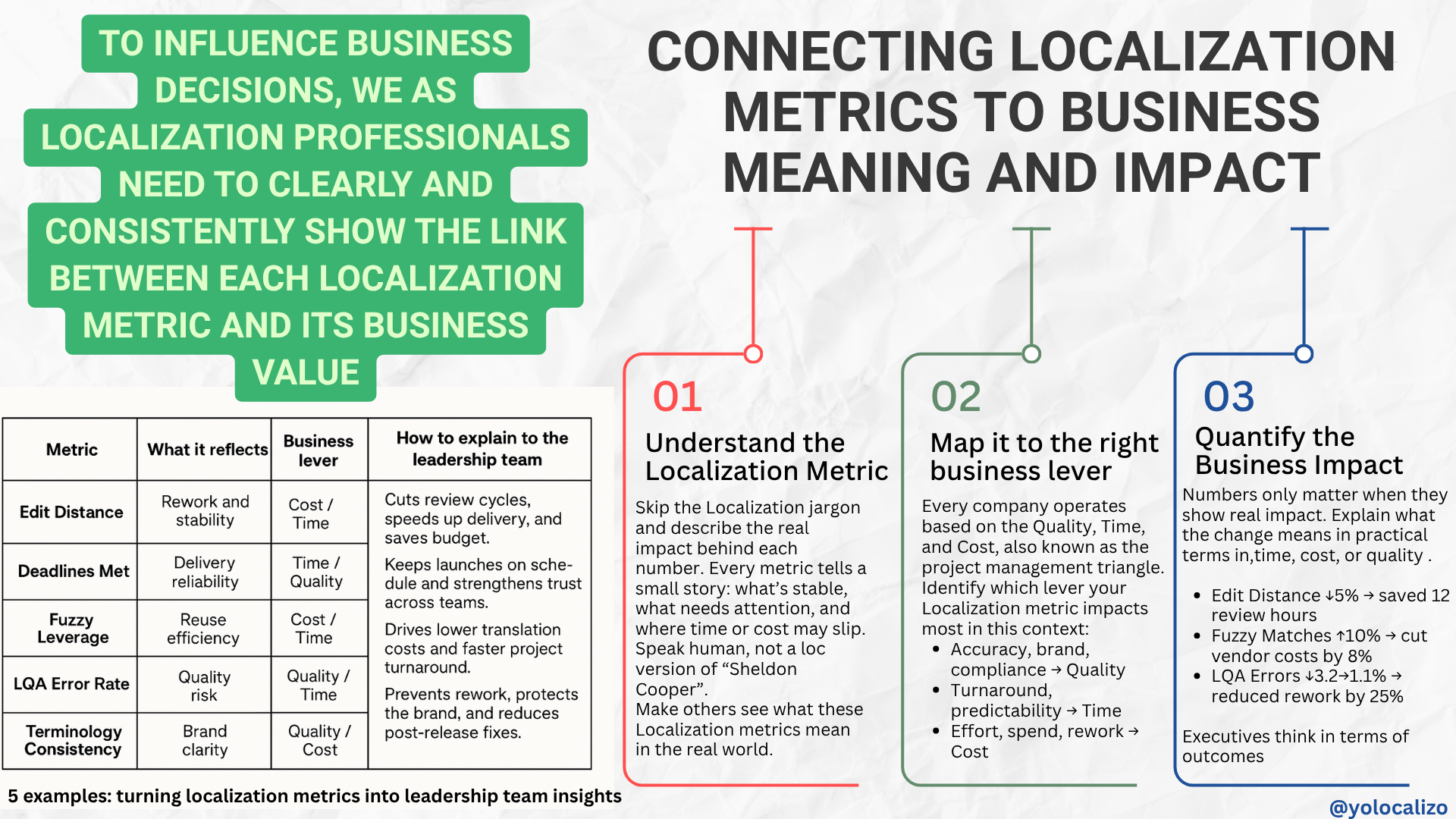I was a team leader by chance, as I was a good Individual Contributor (IC) with knowledge of localization quality assurance and good communication skills. My transition was difficult and bumpy, as I was not ready and did not know the differences between being an IC and a Localization Team Manager. Despite the challenges, my capacity to adapt helped me succeed. To successfully transition from an IC role to a Localization Manager role, one must have the right mindset, be surrounded by skilled professionals, and have a supportive manager. I now understand the differences and want to share my learnings with others.
Over the years, I’ve noticed that localization buyers, like the emotions in Inside Out, are often driven by one dominant need. Some are in survival mode, juggling too much. Others are just getting started and need guidance. Some care about speed, others about cost, and some are laser-focused on how things feel in-market.
Most localization discussions stop at per-word rates. However, what appears inexpensive on paper can often turn into costly delays, rework, and frustrated teams.
Total Cost of Ownership (TCO) provides a more comprehensive view, one that encompasses engineering fixes, QA cycles, support tickets, and brand impact.
When procurement and leadership focus only on price, localization becomes a cost center. When they consider TCO, it becomes a key driver of quality and efficiency. And this post explains how to approach that
Many teams treat localization vendors as interchangeable compare rates, sign the contract, move on. But every switch comes with invisible costs: lost context, quality dips, and team fatigue. In this latest post, I unpack what really happens behind a vendor change ( and how to prepare for it like a continuity project, not a quick fix)
Localization teams collect tons of data, edit distance, LQA errors, fuzzy matches, deadlines met, but too often, that data doesn’t speak the language of business. This post explains how to change that. By linking each localization metric to one of the classic project management levers, quality, time, or cost, and showing its real-world impact, we can turn linguistic KPIs into insights that leaders understand, value, and act on.
Let’s be honest. Our industry has not done a great job explaining the cost behind a good translation. What does the translation cost? Is it by word, per page, per type of document? We've been opaque for years about this topic. There are many reasons behind the cost of translation. This post will help you understand what you should take into consideration when purchasing a localization job.
Many companies claim to be customer-centric, but too often that promise stops at English. Surveys and focus groups are run in the US or UK and treated as if they represent the entire customer base, leaving most global customers unheard. In this post, I share a practical framework 5 audit questions to help leaders test if their strategy is truly customer-centric or just a slogan.
Many companies claim to be customer-centric, but in practice their listening stops at English. Most research is based on customers in the US or UK and then applied everywhere else. The result is predictable: cultural blind spots, costly rework, and frustrated global customers. In this post, I explore why true global listening begins when localization insights are treated as part of the customer voice
Reorganizations are disruptive. For localization teams, they bring a double challenge: the fear of being affected and the pressure to keep global launches on track. While executives focus on restructuring, customers still expect consistent experiences across markets. That’s why reorgs can be an inflection point an opportunity for localization leaders to show resilience, protect business continuity, and earn a stronger seat at the table.
Usually, when we want to improve something in our Localization strategy, we first set an ambitious goal. From there, we design a strategy to reach it as quickly as possible. If we don't see rapid changes, we feel like we're not improving. To break this cycle, we can try changing the way we set goals—smaller, but consistent objectives that, when we look back, show us that we are indeed making progress. This progress can be the driving force for us every week, every month, every year.
Here are some ideas on how we could apply this Kaizen methodology in the Localization world.


























Even when localization teams aren’t directly affected by a company reorg, everything around them can change fast sponsors move, teams merge, budgets shift.
That’s when weak governance shows its cracks.
This post explores how strong localization governance keeps programs stable, visible, and credible no matter how often the org chart moves.